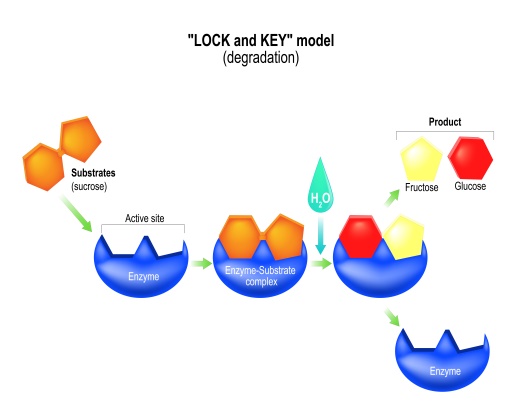Proteases & Other Enzymes
The Introduction of Protease

Protease is a general term for a class of enzymes that hydrolyze protein peptide bonds. According to the manner in which the polypeptide is hydrolyzed, it can be divided into two types, an endopeptidase and an exopeptidase. The endopeptidase cleaves the inside of the protein molecule to form a small molecular peptide. The exopeptidase hydrolyzes the peptide bond one by one from the terminal of the free amino group or carboxyl group of the protein molecule, and the amino acid is released, the former being an aminopeptidase and the latter being a carboxypeptidase. Protease can be further divided into serine protease, thiol protease, metallo proteinase and aspartic protease according to its active center. According to the optimum pH value of the reaction, it is divided into acid protease, neutral protease and alkaline protease. Protease is used in industrial production, mainly endopeptidase. Proteases are widely found in animal viscera, plant stems, leaves, fruits and microorganisms. Microbial proteases are mainly produced by molds and bacteria, followed by yeasts and actinomycetes. Proteases have many types, and important ones are pepsin, trypsin, cathepsin, papain, and subtilisin. Protease has strict selectivity for the reaction substrate to be applied. Proteases can only act on certain peptide bonds in the protein molecules, such as peptide bonds formed by trypsin catalyzed hydrolysis of basic amino acids. Protease is a widely distributed protein, and is especially abundant in the digestive tract of humans and animals. Due to the limited resources of animals and plants, the industrial production of protease preparations is mainly prepared by fermentation of microorganisms such as Bacillus subtilis and Aspergillus oryzae.
Other Enzymes
An enzyme is a protein or RNA produced by living cells that is highly specific and highly catalytically potent to its substrate. Enzymes are a very important class of biocatalysts. According to the nature of the reaction catalyzed by the enzyme, the enzyme is divided into six categories. Oxidoreductase is an enzyme that promotes the redox reaction of the substrate. It is a kind of enzyme that catalyzes the redox reaction and can be divided into two types, oxidase and reductase. Transferases are enzymes that catalyze the transfer or exchange of certain groups (such as acetyl, methyl, amino, phosphate, etc.) between substrates, including methyltransferase, aminotransferase, acetyltransferase, kinase and polymerase, and so on. Hydrolases enzymes catalyze the hydrolysis of substrates, such as amylase, protease, lipase, phosphatase, glycosidase, and the like. Lyases remove a group from the substrate (non-hydrolyzed) and leave a double bond or its reverse reaction, including dehydratase, decarboxylase, carbonic anhydrase, aldolase, citrate synthase, and the like. Many lyases catalyze a reverse reaction that creates a new chemical bond between the two substrates and eliminates the double bond of a substrate, and synthase belongs to this class. Isomerase converts its substrates between various isomers, geometrical isomers, or optical isomers. Ligase catalyzes the synthesis of a two-molecular substrate into a single molecule of compound, coupled with an ATP-linked phosphate-cleaving enzyme, such as glutamine synthetase, DNA ligase, biotin-dependent carboxylase, and the like. According to the principle of uniform classification of enzymes published by the International Biochemical Association, on the basis of the above six categories, and each of the main types of enzymes, as well as the characteristics of the groups or bonds acting on the substrate, it is divided into several sub-categories. Precisely indicating the nature of the substrate or reactant, each subclass is subdivided into several groups (sub-subclasses); each group contains several enzymes directly. Due to the character of the enzyme, the chemical reaction in the living body can be carried out efficiently and specifically under extremely mild conditions.
References:
- Alnemri E S, Livingston D J, Nicholson D W, et al. Human ICE/CED-3 Protease Nomenclature. Cell. 1996, 87(2):171.
- Martin S J, Green D R. Protease activation during apoptosis: death by a thousand cuts. Cell. 1995, 82(3):349-52.
- Cardone M H, Roy N, Stennicke H R, et al. Regulation of cell death protease caspase-9 by phosphorylation. Science. 1998, 282(5392):1318.